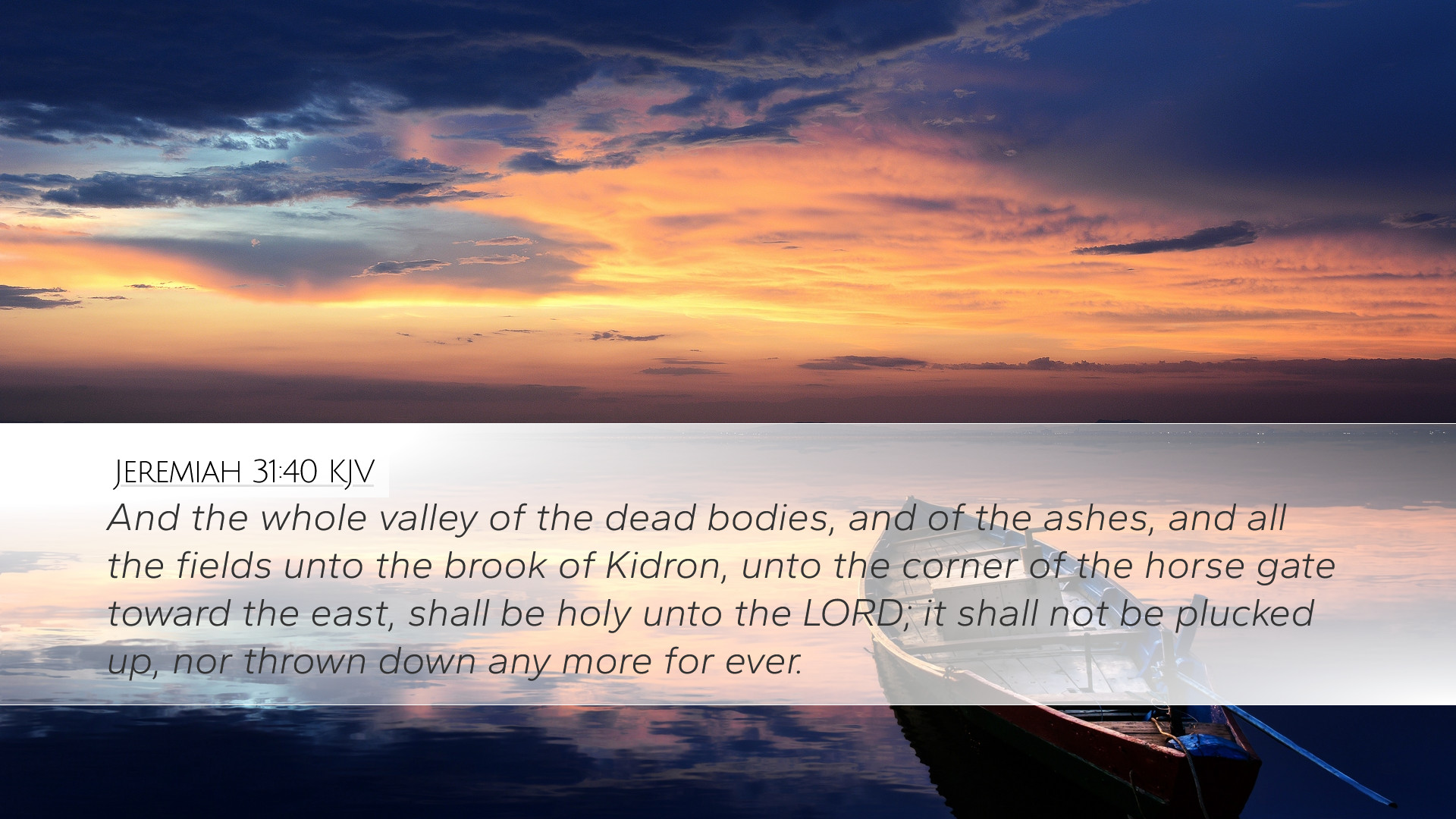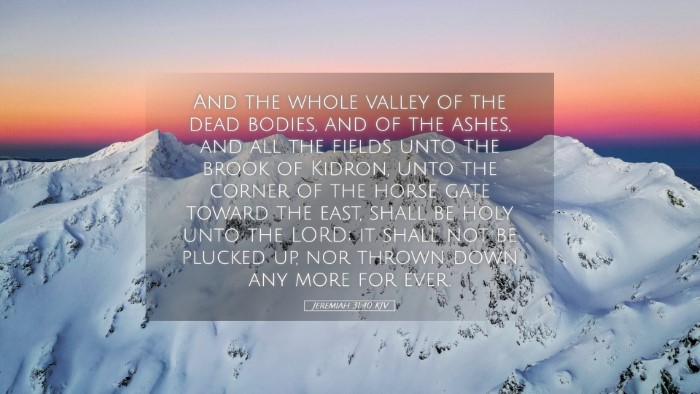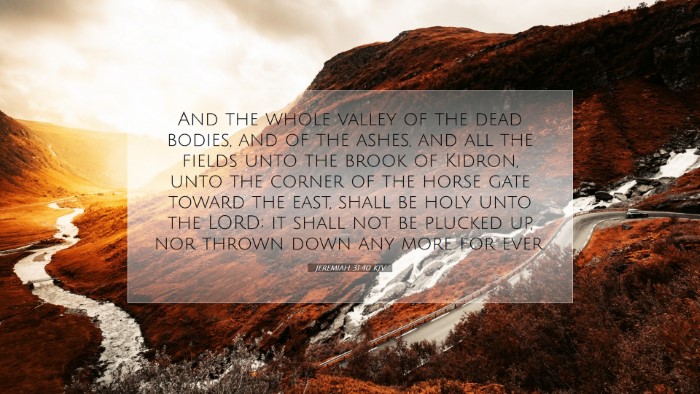Commentary on Jeremiah 31:40
Jeremiah 31:40 states:
"And the whole valley of the dead bodies and of the ashes, and all the fields unto the brook of Kidron, unto the corner of the horse gate toward the east, shall be holy unto the LORD; it shall not be plucked up, nor thrown down any more for ever."
Contextual Background
This passage comes from the book of Jeremiah, often viewed as a collection of prophecies about judgment and restoration. The prophet Jeremiah frequently spoke to the nation of Judah during a tumultuous time, foretelling both their impending exile and the eventual restoration to their homeland. The context of this verse pertains to the hope of renewal after despair.
Theological Insights
The verse presents significant theological concepts surrounding holiness, restoration, and divine permanence. It reflects God's sovereign plan for His people despite their sinfulness.
-
Holiness of Space: The reference to the valley of dead bodies and ashes signifies a place of deep sorrow and loss. However, God declares it will be holy. This transformation highlights God’s ability to redeem and sanctify even the most unholy and desolate places.
-
Permanent Restoration: The promise that such areas will “not be plucked up, nor thrown down any more for ever” emphasizes the permanence of God’s restoration work. The former desolations will be replaced with hope and life, symbolizing a new covenant relationship between God and His people.
Commentary Insights
Matthew Henry's Perspective
Matthew Henry considers this verse in the context of God’s promise of restoration to Israel. He emphasizes that the ruins, which symbolize death and despair, will be transformed into a holy and sacred space, further illustrating God's plan to bring life to what was once lifeless. Henry highlights the importance of viewing the desolate places (whether physical or spiritual) as domains that God can reclaim and consecrate for His glory.
Albert Barnes' Interpretation
Albert Barnes highlights the significance of the physical geography mentioned in Jeremiah 31:40. The brook of Kidron and the horse gate indicate specific locations that once played a role in Israel's history. Barnes points out that these areas, often associated with past idolatry and judgment, are now promised a new identity. His commentary stresses that God’s grace transcends judgment, offering a hopeful future beyond historical failures.
Adam Clarke's Analysis
Adam Clarke elaborates on the imagery of ashes and dead bodies. He interprets them as a profound symbol of divine judgment placed on a nation that strayed from God’s covenant. Yet, Clarke points out the remarkable shift from destruction to holiness, which speaks volumes of God’s merciful character. He stresses that the promise of perpetual holiness is a testament to God’s commitment to His people, indicating a new order that will emerge from the ashes of the old.
Practical Applications
This verse and its commentary can inspire several practical applications for modern readers, pastors included:
-
Hope amid Despair: It serves as a reminder that, no matter how dire the circumstances, God’s power can bring about restoration.
-
Understanding God’s Holiness: The transformation of a desolate place into a holy site teaches us that God’s holiness can infuse any area of our lives, encouraging personal reflection on our own ‘desolate places.’
-
Communal Identity: As a community of believers, the Church can reflect on its collective identity as a place where God delights to dwell, even amid previous disobedience and downturns.
Conclusion
Jeremiah 31:40 encapsulates a profound promise of redemption and holiness. The insights from public domain commentaries by figures such as Matthew Henry, Albert Barnes, and Adam Clarke contribute to a deeper understanding of both the historical and spiritual dimensions of this passage. Thus, it stands as a significant reminder of God's unyielding commitment to restore and reclaim His people, offering eternal hope and assurance of His divine presence.


